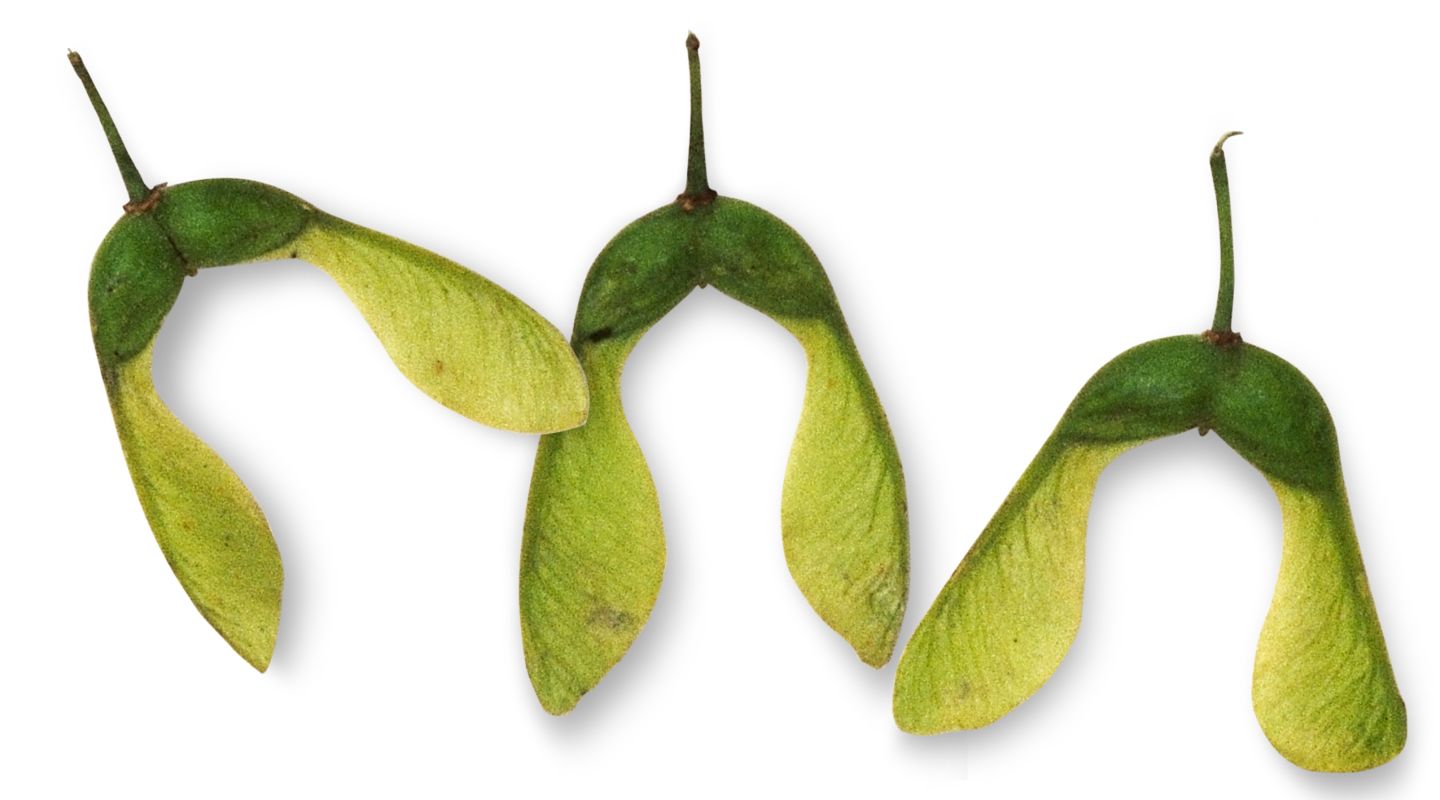If you drop a parachute from a height (height x) with a mass attached (mass y), it shows that gravity is acting on it. However, due to the parachute, it falls slower than if you dropped mass y from height x without the parachute. A possible experiment to investigate this would be to change the size (S.A.) of each parachute (let's say you have 5 of them) and attach mass y, dropping them from height x each time and measuring how long they take to reach the ground using a stopwatch. To make the experiment fair, you would have to keep the mass, height, material of the parachute, environment and the way it is dropped the same.
Sycamore seeds
Sycamore seeds work in a very similar way. If you were to do the experiment with sycamore seeds, you would have to get, let's say, 5 sizes of seeds, measuring their S.A. and labelling them (by S.A.). Then, you drop them from the top of a 1m ruler and record how long each one takes to reach the floor / table, using a stopwatch to time it. You'd have to keep the height, way the seeds are dropped, environment, etc the same. for the experiment to be fair.
Common pattern
If you plotted a graph for the experiments above, you would see that there is a direct correlation between the time it takes for the parachute / seed to reach the floor and the surface area: the bigger the surface area, the longer it takes for it to reach the floor.
Explanation
This is because increased surface area means that there's a greater space to experience air resistance, which opposes gravity / weight. This makes the fall slower if the surface area is greater. As it experiences more air resistance, it increases more quickly, so it balances out the weight (downwards force) faster too. This causes the object to reach terminal velocity faster. However, because of this, it reaches terminal velocity before it has a chance to accelerate very much (in comparison to an object with less surface area) and therefore falls slower.
KEY ♡
pink = independent variable
blue = dependent variable
red = controlled variables
S.A. = surface area



who tring to give head
ReplyDeletesuck my dick
ReplyDelete?
Deleters
ReplyDeletewhy would u write that
ReplyDeletelol
ReplyDeleteif u wanna give head suck my dick
ReplyDeleteewwww no shush
Deleteik u want to lol
Deletecall me if u want to suck 07765493950 or text
ReplyDeleteur phones off ugly
Delete